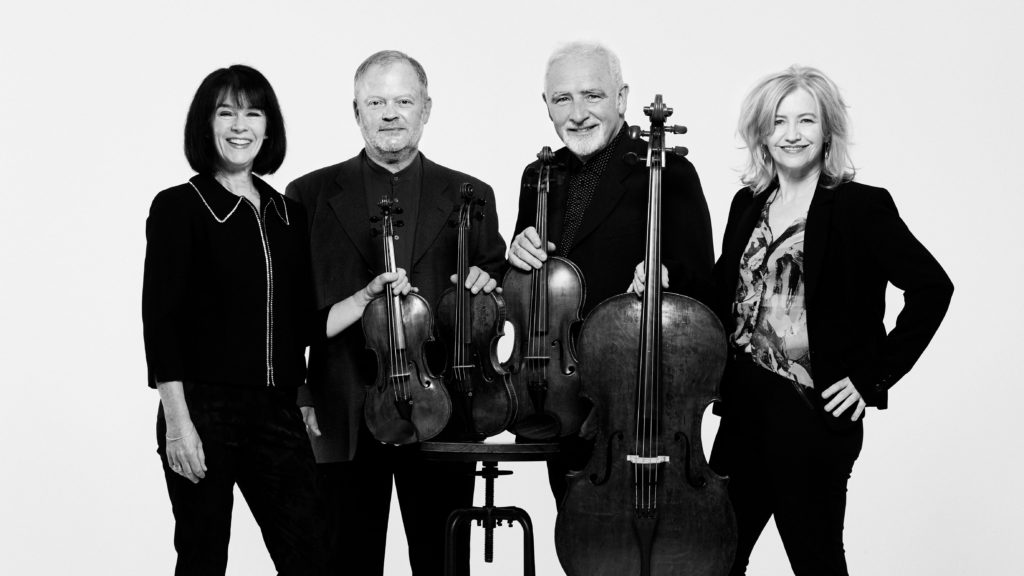Beethoven, Our Contemporary
Feature
As part of Beethoven 250, the Brodsky Quartet pair a single late string quartet with a short work in each of a series of rush-hour concerts. Violist Paul Cassidy tells Inge Kjemtrup how the idea came about.
Kings Place marks the 250th anniversary of Beethoven’s birth in 2020 with an extraordinary year-long series. With performances ranging from symphonies by residents Aurora Orchestra to violin sonatas by period-instrument specialists Rachel Podger and Pieter Wispelwey, and piano sonatas by François-Frédéric Guy, Beethoven 250 is a creative celebration of an indispensable composer.
For many listeners, Beethoven’s 15 string quartets are the pinnacle of his art. His final quartets are a ‘crowning achievement’, according to Paul Cassidy, violist of the Brodsky Quartet, also Artistic Associate at Kings Place, who will perform the late string quartets in a series of rush-hour concerts beginning in January.
In 1824, Beethoven wrote the E flat major Op. 127, a commission from the Russian Prince Golitsïn. The composer was in poor health, his hearing was rapidly deteriorating and he was in the middle of a futile effort to control the life of his nephew Karl. ‘Everything I do apart from music is badly done and stupid,’ Beethoven said. ‘Only in my divine art do I find the support which enables me to sacrifice the best part of my life to the heavenly Muses,’ he confided in his Tagebuch, his journal. Even in his earliest quartets, Beethoven challenged convention and ‘took the string quartet by the scruff of the neck’, says Cassidy. With the late quartets, he departed further from his Classical antecedents when ‘he just suddenly decided to do away with the four-movement structure’. In the Kings Place series, adds Cassidy, ‘we wanted to reflect this moment in time when Beethoven was carrying all the traditions forward but was also looking ahead and pushing the boundaries.’
Each concert pairs a Beethoven quartet with a short piece, sometimes one written especially for the Brodskys. Karen Tanaka’s At the Grave of Beethoven dates from the run-up to the millennium, when the quartet commissioned composers to respond to the six early quartets. ‘It’s become a favourite of ours, and it seemed absolutely perfect for the series.’ Henning Kraggerud wrote Preghiera (‘prayer’) for the Brodsky’s 40th anniversary in 2012. ‘It’s nice to have a contemporary prayer next to Beethoven’s prayer’: that is, the deeply moving slow movement of the A minor quartet, Op. 132, subtitled ‘A convalescent’s holy song of thanksgiving to the deity’.
Cassidy’s own arrangement of Bach’s Adagio and Fugue from Sonata for solo violin, BWV 1005, – ‘the longest fugue he ever wrote, and it’s for solo violin!’ – introduces the C sharp minor quartet, Op. 131, a favourite of many, including possibly Beethoven himself.
‘Beethoven’s late quartets are said to be profound and rather daunting, but ‘some of them have the happiest music he ever wrote’
The late quartets are thought of as deep and profound, but also daunting. Yet Cassidy says, ‘For all their profundity, some of them have the happiest music he ever wrote.’ In some early performances of Op. 127, the work was played twice to help the audience better understand it. However, it’s the Grosse Fuge, Op. 133, that has the most fearsome reputation. Stravinsky, not an admirer of Beethoven’s music, loved the Grosse Fuge, calling it ‘the most absolutely contemporary piece of music I know, and contemporary for ever’. Cassidy notes that ‘the central section of the Grosse Fuge is some of the most beautiful music ever written by anybody, and it comes out of this absolute chaotic madness’.
The final concert in the series opens with a different soundworld: the Purcell Chaconne in G minor, which sets up the B flat Quartet, Op. 130. The Brodskys will conclude that quartet with the final movement Beethoven composed to replace the Grosse Fuge, a fitting end to a series devised, says Cassidy, ‘to thank Beethoven for that gift to humanity’.

© Sarah Cresswe